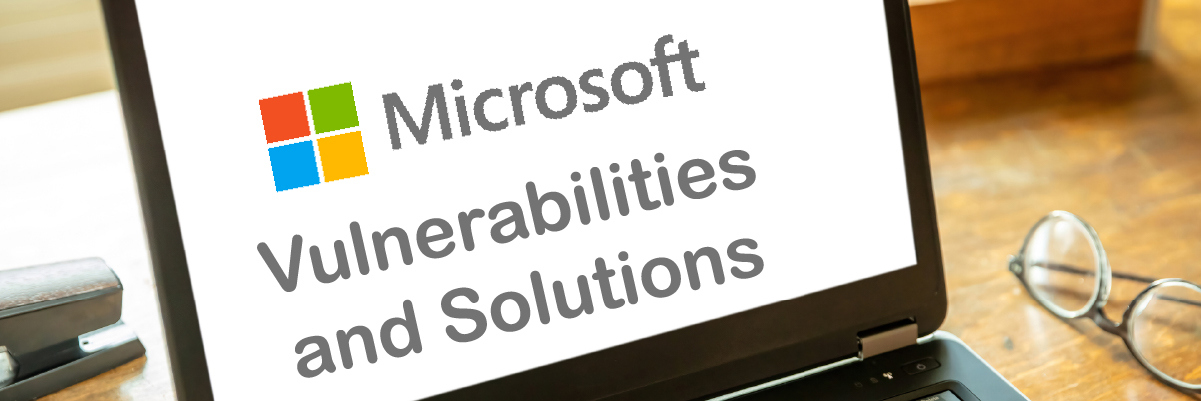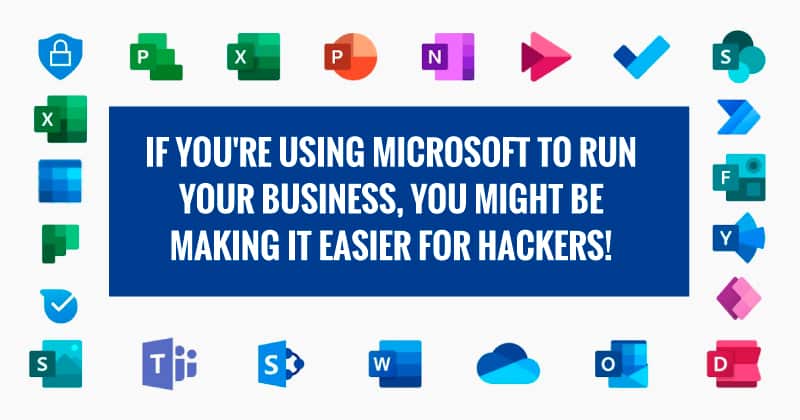Wellstar Health System Reveals Data Breach
Wellstar Health System Reveals Data Breach
 Wellstar Health System announced on Friday afternoon that its email system had been hacked.
Wellstar Health System announced on Friday afternoon that its email system had been hacked.
Well, it happened again. A data breach occurred at yet another healthcare firm. This time, it was Wellstar Health System. Unauthorized attackers obtained access to two email accounts two months ago, the organization discovered on Friday. Through those email accounts, gained access to patients’ health care information and it was exposed, including patient laboratory information. They missed the 2021 Healthcare Data Breach Trend Report from Protected Harbor at HIMSS.
Emails are one of the most common ways that hackers access sensitive information. This is because people often use their work email for personal purposes, so it is easier to get access to it. Hackers can use different methods and tricks to an email account. They might trick health workers into sharing their passwords, or they could send them a virus that tries to steal employee passwords from company computers.
If you are reading this, you understand that it’s essential to keep any critical emails secure when handling sensitive information. After all, Patient Health Information (PHI) and Electronic Health Records (EHR) can earn a few hundred dollars each on the dark web. That means healthcare employees are more targeted by hackers. And still, many healthcare organizations are not taking the proper steps to protect company email from hacking.
This article will go over how to defend yourself against important threats and what email security precautions you should take.
Install the Right Software
One of the essential email security precautions you can take is installing the right software to protect your emails. Many software options offer various levels of protection, so find out which one will work best for your needs. If you’re in healthcare, consider higher levels of security because you have a lot more sensitive information. Healthcare IT staff may also want to invest in Malwarebytes, a well-rounded antivirus solution, to provide another layer of protection against hacking.
Spam Hero is a software that looks for spam scans messages for infections before it reaches the Stopping malware emails before reaching an inbox can help keep hackers out of any sensitive documents you may come across in the future. Think how many emails with attachments are sent each day; if they were all scanned before recipients could open them, this would significantly decrease the chances of hackers getting a hold of sensitive information like PHI and EHR.
Monitor Your Inbox Activities
One of your email inboxes has received ten emails in one day. However, you only get about two a day, you do not remember sending out any emails that day, and it’s a Sunday. Is there a cybersecurity breach on your network? It could indicate that someone is trying to gain access to company information and has begun by accessing people’s email accounts. Monitor account activity regularly, and if you notice anything suspicious, have a playbook to implement additional security measures if you see something odd. Set up a new email address if necessary and measures such as multifactor authentication or changing all passwords. It is also important to routinely change passwords, even when there is no evidence of a breach; no system is perfect, and it’s better to be safe than sorry!
Educate your Employees & Staff
As exposed recently, hackers find new ways to trick healthcare employees into giving up sensitive information. Here are four easy things every HCIT department can do to improve their company’s employee cyber safety awareness:
- Encourage employees to come forward if they suspect an email of being bogus.
- Educate employees on what dangerous emails might look like. A recent study showed that over a quarter of doctors could not identify a malware email.
- Tell your employees not to open attachments unless 100% confident that it is a trusted source. Installing a filter those auto-checks attachments is even better.
- Have an Email Password Checklist for all of your employees.
We all have complex emails, but make it a requirement, set up failsafes to avoid re-used passwords, and help make it easier for your staff with some tips and how-tos. These simple tips will help protect against email cyber-attacks.
Use Two-Factor Authentication
Two-factor authentication is a great way to add an extra layer of security to your online accounts and protect yourself against email cyber-attacks. 2FA prevents hackers from simply guessing passwords and lets you focus on protecting other healthcare network vulnerabilities. By implementing these simple steps, you can protect your business and its data without adding too much time or hassle into everyday workflows.
One of the easiest ways to protect yourself from hacking is to turn on two-factor authentication. 2FA will help ensure your information is more secure, and it doesn’t take much more time or effort than what you were doing before.
You might think it’s unnecessary to use two-step verification when you already have high-end cybersecurity software, but that is not true. Software and two-step verification work together to make sure your information is safe. A bad actor can bypass a security measure, so it’s necessary to have other protections in place too. This is where software and 2FA come in handy again.
 Use Encryption
Use Encryption
One of the most effective ways to protect yourself from hackers is by using encryption. Encryption scrambles the content of your email so that only you and the intended recipient can read it. It means that if a hacker does manage to intercept your email, they won’t be able to understand what it says. Even if they could break the encryption, any sensitive information in your email will be rendered indecipherable.
One such solution is ProtonMail, a secure email service that encrypts all of your messages by default. The only person who can decrypt your email is someone you sent it to or someone in the same organization (if they have a shared account).
Protect your Physical Computer and Network
Cybersecurity does not produce images of big burly security guards, but physical computer and network safety are just as crucial as virtual. This means having physical security checkpoints at entrances and exits of your healthcare organization. It would help if you also were careful about which devices employees plug into the network. Just because a power strip is plugged in doesn’t mean that it’s safe to plug in their mobile device.
Auto-lock and Remote Wipe Apps
Just think of how many texts you receive each day. You might likely be one of the unlucky people who have had their phone hacked. All someone needs to do is get a hold of your phone, and they can easily access any sensitive information on it, including work passwords. It may seem like locking your phone is a no-brainer, but not every employee does it. If your company hands out company phones or lets employees use their personal phones for work email, then decrease the auto-lock time to 30 seconds and install remote wiping.
Remote wipe is a security feature that allows a network administrator or device owner to send a command to a computer device that erases data. It’s usually used to wipe data from a lost or stolen device so that the information isn’t jeopardized if it comes into the wrong hands. It can also be used to erase data from a device that has changed owners or administrators and is no longer accessible physically.
Closing Thoughts
There are no easy answers when it comes to healthcare cybersecurity and email security. All of the things described above, and more, could have been performed by Wellstar Health System. Finally, attacks are growing more sophisticated, data is becoming more readily available, network connection points are rising, and healthcare IT professionals are being spread thin. When it comes to safeguarding your healthcare networks and servers, the first step is to determine which employees have access to sensitive information and which staff require specific data access.
Any strategy must also be adaptable and responsive to changes as they occur. Protected Harbor focuses on more than just software but hardware integration, special application connectivity, and employee workflows to create an always-safe environment. It is likely that at some point, HCIT will need to seek professional help to tackle the security breaches, so it is better to assign the task of managing the system security to an external agency. This way, you will no longer have to worry about data and network security, and your team will be able to focus on medical-related tasks.
An experienced, outside partner can help you see the bigger picture. Protected Harbor has the best practice knowledge on securing managed file transfers, HIPAA-compliant emails, data management, and security. We make sure your data is safe by using robust auditing and encryption technology that meets or exceeds HIPAA requirements for healthcare organizations.
Check out our 2021 Healthcare Data Breach Trend Report from HIMSS and our free eBook Optimizing the Healthcare Stack for Performance to learn more. We are also offering free IT Audits to all healthcare organizations for the next month following this attack. Reach out to schedule one today.






 In this rapidly evolving threat landscape,
In this rapidly evolving threat landscape, 

 Having a business partner brings a lot of benefits. Companies can work better by finding someone with the same visions and goals. Starting a business and running it is never an easy task. Small business owners across all industries, including the IT field, know the importance of partnership. They have to manage everything from setting up infrastructure, maintenance to customer services and security.
Having a business partner brings a lot of benefits. Companies can work better by finding someone with the same visions and goals. Starting a business and running it is never an easy task. Small business owners across all industries, including the IT field, know the importance of partnership. They have to manage everything from setting up infrastructure, maintenance to customer services and security.

 Technological advancement in the current digital era has increased vulnerabilities in businesses using Microsoft products. It has affected most
Technological advancement in the current digital era has increased vulnerabilities in businesses using Microsoft products. It has affected most  Microsoft MSHTML
Microsoft MSHTML

 With the onset of the pandemic and transformation in workplace behaviors, remote work has reached a climax. Many companies face the same question – what is the best collaboration tool for working at home?
With the onset of the pandemic and transformation in workplace behaviors, remote work has reached a climax. Many companies face the same question – what is the best collaboration tool for working at home?  Slack Negative Features
Slack Negative Features












 The United States Government has warned privately-held American firms about the growing threat of cyberattacks from Russian hackers.
The United States Government has warned privately-held American firms about the growing threat of cyberattacks from Russian hackers.